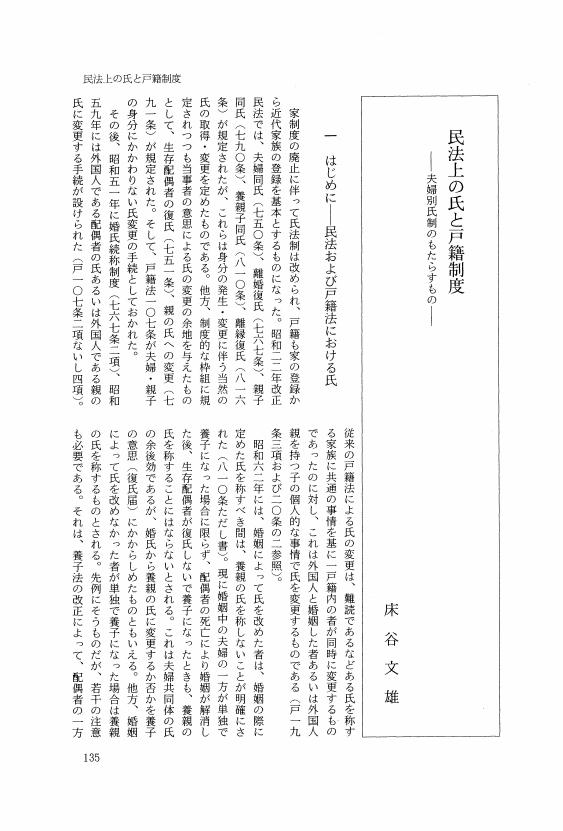1 0 0 0 OA 東京唱歌 : 地理教育
1 0 0 0 OA 文学概論
- 著者
- 武島羽衣 (又次郎) 著
- 出版者
- 人文社
- 巻号頁・発行日
- 1903
1 0 0 0 OA 文章綱要
- 著者
- 武島羽衣 (又次郎) 著
- 出版者
- 金港堂
- 巻号頁・発行日
- 1904
1 0 0 0 OA 霓裳微吟 : 美文韻文
1 0 0 0 OA 新編国語読本編纂趣意書
- 著者
- 小山左文二, 武島又次郎 著
- 出版者
- 普及舎
- 巻号頁・発行日
- 1901
1 0 0 0 OA 女子書翰文範 : 習字兼用
1 0 0 0 OA 東京唱歌 : 地理教育
1 0 0 0 OA 官報
- 著者
- 大蔵省印刷局 [編]
- 出版者
- 日本マイクロ写真
- 巻号頁・発行日
- vol.1902年10月30日, 1902-10-30
- 著者
- 藤村 正司
- 出版者
- 広島大学高等教育研究開発センター
- 雑誌
- 大学論集 (ISSN:03020142)
- 巻号頁・発行日
- vol.43, pp.99-115, 2011
Why has the percentage of women enrolled at university always been lower than that of men, even at a time of universal provision? Although the differences in participation rates between men and women have been well documented, less is understood about why this is so. The aim of this paper is to investigate the structure of university attendance in Japan from the viewpoint of sibling order and sex. Using the 2005 National High School Parent Survey, the effects of ability, parental income, the number of siblings, birth order, and parental altruistic attitude towards university attendance and expenditure, were investigated. The parental survey sought information on family background, and included questions relating to parents' willingness or obligations in paying for the education of their 18 year-old children. Although the extent to which parents invest in their children has long been recognized as integral to status attainment or human capital theory, that investment has rarely been examined directly. Special emphasis was placed on the role of two parameters: the number of siblings and their birth order, and parents' altruistic attitude. The major findings are as follows:(1) Resource-dilution hypothesis was supported by the data. There was an inverse relationship between the number of siblings and out-of-school expenses, and to an aspiration to attend college, which were attributed to a reduction in the availability of family resources available for each child. (2) An examination of the effect of birth order proved that if other variables were controlled, parents held less aspiration for, and spent less on out-of-school expenses for, their later-born daughters than for their sons. This alternative resource allocation suggests that parents prefer having sons to daughters in order to solve any contradictions between equality and efficiency among siblings.(3) Disparity between college attendance and non-college attendance is affected by the adequacy of family income and this has a greater effect on the aspirations of women than it does for men. (4) Parents may attempt to equalize educational attainment among their offspring. If older sons have attended college, parents hope their younger brothers will also do so. However, this depolarizing effect worked only for males, since daughters were more likely to resemble their non-college brothers and sisters. (5) While parents' altruistic attitudes (fear of incurring a loan on behalf of their daughter) had a negative effect on the probability of their daughters attending college, it did have a positive effect on the payment of college tuition and the cost of living.These classical findings show that inequality of educational opportunity still remains more or less constant between sons and daughters within the same family even during the era of universal provision.
1 0 0 0 OA 民法上の氏と戸籍制度 夫婦別氏制のもたらすもの
- 著者
- 床谷 文雄
- 出版者
- 日本私法学会
- 雑誌
- 私法 (ISSN:03873315)
- 巻号頁・発行日
- vol.1990, no.52, pp.135-140, 1990-05-20 (Released:2012-02-07)
